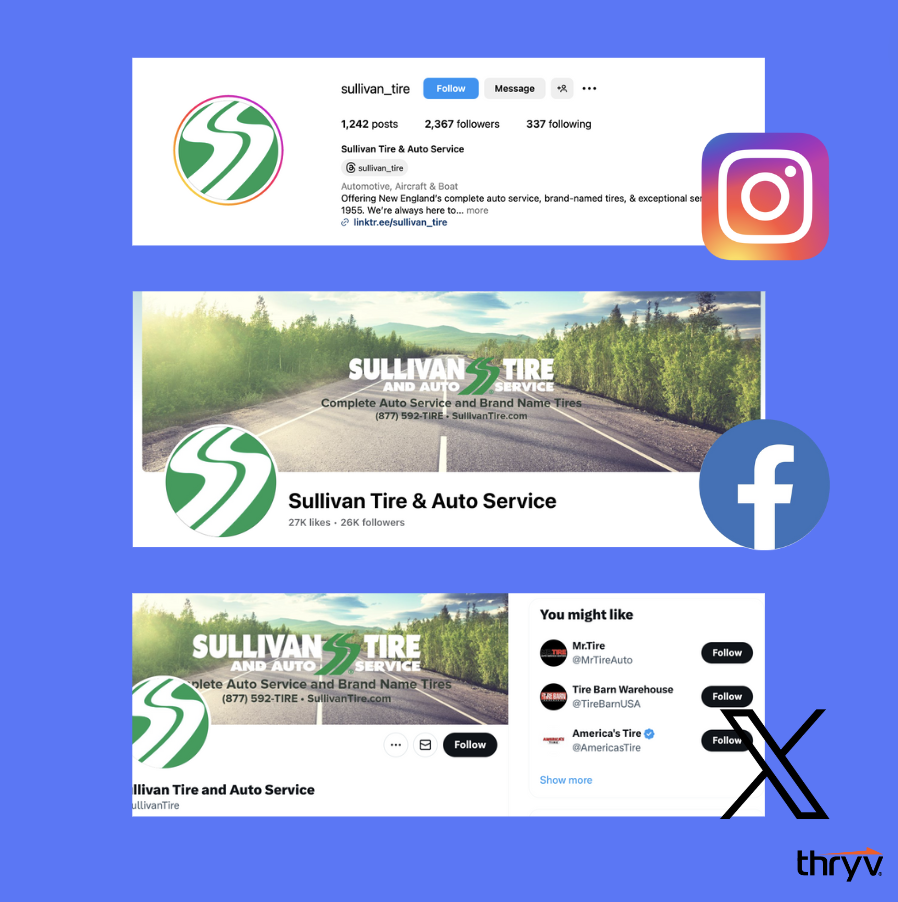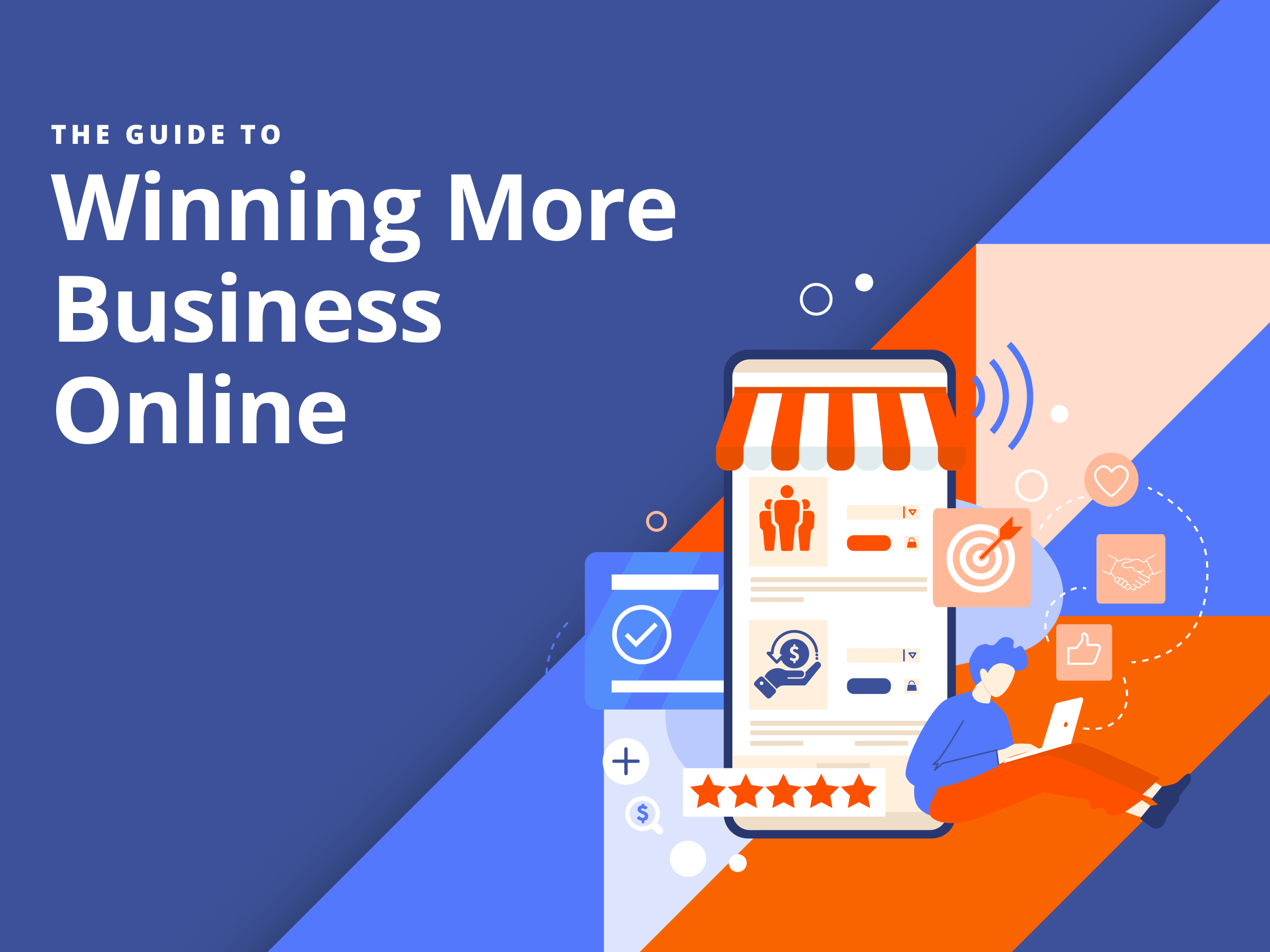Brand awareness is a key component of running a small business. When a small business positions itself well, customers become more familiar with it and are more likely to seek them out when buying something new.
Most of us can think of companies with strong brands: Apple, McDonald’s, and Disney, to name a few. But you don’t have to be an international conglomerate to build brand awareness. Businesses of any type or size can develop a strong relationship between their customers and their brand.

The Guide to Winning More Business Online
DownloadIn this post, we’ll review different examples of building brand awareness at small businesses and examine companies that have developed strong brands in their industries. Understanding these examples will help you increase sales and attract repeat customers to your business.
10 Examples of Building Brand Awareness
There are several ways you can build brand awareness. Let’s review some of the most effective strategies and examples of each.
1. Clearly position your brand.
As a small business owner, you know why your business is unique. Maybe it’s your product, or your customer service, or your attention to detail. Whatever it is, identify what makes your company stand out from the rest in your industry.
This is called brand positioning, and it’s the reason why your customers will pick you over a competitor. Your brand positioning should inform your brand-building efforts since it differentiates you from the competition. It should explain why customers should think of you and choose you over another provider.
Example: Magellan Jets
Magellan Jets is an aviation company where you can charter flights using private jets. But, it doesn’t brand itself as an airline. Instead, it calls itself “the world’s first private aviation provider” that prioritizes safety and peaceful experiences. This brand positioning tells customers they should associate the company with safety and quality.
2. Keep design in mind.
Logos can greatly influence brand recognition – after all, it’s a big part of your company’s visual identity, your audience will start to associate its patterns, colors, and images with your business.
Invest in a quality design that clearly demonstrates your brand’s mission, and use colors that fit your brand persona. A good logo and design will create feelings of familiarity whenever customers see things associated with your brand.
Example: Airtable
Airtable is a tech company that boasts making it easier for people to build apps and software. Its logo (shown below) is a great visual representation of what it does. The actual simplistic table icon, with bright colors and airy white space, implies lightness, ease, and friendliness. In many ways, this visual identity very clearly demonstrates what the brand is all about.
3. Tell an authentic brand story.
People connect with honesty and authenticity. As a small business owner, your community ties and personal stories are part of your brand. Don’t be afraid to use them in your brand awareness campaign.
Remember, you’re not just a business but a neighbor in your community. Describe why you work in this industry and tell that story openly and honestly. It will create a marketing message that resonates with people.
Example: Downeast Cider
Downeast Cider started as a small cidery in Maine. Over time, it grew into one of the more recognizable hard cider brands on the market. Its brand story stays true to its roots, recognizing how far it’s come from its humble beginnings. Customers can appreciate this story because it feels like they’re supporting a local brand.
4. Connect with your audience.
When customers reach out, reach back. Connecting with your audience online or by other means (phone calls, events, etc.) helps people see your brand as more than a seller of goods and services. People want to be acknowledged and feel cared for in brand interactions. They want to be seen. Doing so creates a positive customer experience they’ll hold onto.
Example: Hoodkroft Country Club
This small business does a great job of connecting with its audience by hosting community events. “Glowball” is glow-in-the-dark golf. Players use balls that light up, and the holes have LED lights. It’s a fun event that brings the community together, and as the weather begins to cool down in many regions, it’s a great way to stay relevant in the off-season.
5. Develop your content strategy.
Content marketing is crucial for your brand. It should align with your brand story, values, and tone.
When it comes to your content, go for clear, not complicated. Consider what customers want to see and how you can deliver it. And, if you have something unique to offer, make that into content. For example, if you’re a plumber with both a ton of expertise to share and a great sense of humor, show that off in videos and utilize social media to share it with your customers.
Pro Tip: Don’t push yourself to create content just because others do it. If it’s not authentic, it won’t resonate with your audience.
Example: Thryv
In the last year, we have done a ton of work to build our brand awareness through content. Our blog is one example, but we’ve also created some great social media content. Our team constantly posts tips and tricks to manage your small business, and who can resist Ed Balusek’s viral TikToks? Using a blend of different marketing channels is a great way to expand reach and grow your audience to new customers (more on this next).
@getthryv If your business is getting lost in Google searches, you can fix that! Get consistent and start responding to reviews, adding photos, and keeping your information up to date. #marketing #socialmediamarketing #smallbusinesstips
6. Use multiple channels for marketing.
Now that you’re thinking about what your content strategy might look like, you need to choose the right channels for your message. Remember that people find brands in different ways. You’ll need to determine which marketing channels are the ones where you’re most likely to reach potential customers and how to reach them on those platforms.
Try not to limit yourself to just one channel – though sometimes putting more focus on some over others makes sense, depending on where your target customers spend the most time online. But sharing content on multiple platforms can help you a) reach customers in various ways and b) give them multiple opportunities to interact with your brand.
Example: Sullivan Tire and Auto Service
This example of building brand awareness comes from Sullivan Tire, an automotive brand located in the Northeast U.S. It builds brand awareness through its social media channels and popular television commercials. Using a mix of platforms helps the brand stay relevant online and launch digital marketing campaigns.
 7. Update your Google Business Profile.
7. Update your Google Business Profile.
Search engine optimization (SEO), which helps you become easier to find on search engines, is an effective tool for small businesses. Because so many customers find local services through search engines, having a strong presence on Google can help you attract new customers. Your Google Business Profile is one of the first things you can create to boost your online presence. You’ll appear on Google Maps, and customers can leave reviews for your business, improving your SEO.
Example: FRS Roofing + Gutters
Here’s a simple example of building brand awareness. I Googled “roofers near me,” and the first business that came up was FRS Roofing + Gutters. If we click on its online listing, we can see information like the company’s location, operating hours, and customer reviews. Good reviews are important because they influence buying decisions – and help you rank higher on Google.
8. Get (good) press for your business.
Familiarize yourself with local media outlets like newspapers, TV stations, radio stations, and even local influencers. Consider what’s newsworthy and approach those sources with your story. For example, say your company donated to a local cause. Or, maybe you have an “office dog” that went viral on TikTok. Develop relationships with local media teams to help promote brand awareness in a positive, organized way.
Example: Gate City Casino
Gate City Casino is not your prototypical Vegas casino. In fact, it’s not in Vegas at all; it’s in small-town Nashua, New Hampshire. This small business made headlines when one of its customers won a $100K jackpot. While the business loses money on this prize, it turns it into good publicity, attracting more customers who want to win similar prizes.
9. Partner with other brands.
Partnerships are beneficial for brands and customers alike. Partnerships allow you to access another brand’s audience and craft marketing campaigns just for them. You and the other brand can run a promotion or a contest together, or even offer deals for each other’s services. Partnerships allow you to access a wider audience and get more creative with your marketing campaigns.
Example: Tampa Bay Rowdies
This example of building brand awareness is from the Tampa Bay Rowdies, a professional soccer team located in Tampa Bay, Florida. They offer partnerships for local businesses to advertise in the stadium, like this one from Colony Grill, the “official pizza of the Rowdies.” Businesses can build brand awareness through in-game promotions or season-long giveaways. It’s an effective way to leverage sports marketing in your local community.
10. Invest in advertising campaigns.
Digital and traditional advertising are two tried and true ways to build brand awareness. A strong advertising campaign can expose your brand to potential customers who are a good fit for your products and services.
Think about Super Bowl campaigns. Big brands spend millions of dollars on them for a reason. They draw exposure to tons of people and are great for brand awareness.
The good news is: You don’t have to spend millions to create a successful ad campaign. Digital ad platforms like Google Ads are great for running online campaigns. You can advertise on Google, Gmail, YouTube, and more, all while having an AI assistant manage your budget.
Example: Sun Company
Sun Company is an outdoor apparel and ecommerce store. It’s on this list because when you search for things like “best gifts for kayakers,” its products appear time and time again. Why? It’s paying Google to appear first in search results. Google creates these “sponsored” results based on the topic’s popularity and how much companies are willing to pay.
5 Brand Awareness Campaign Examples
Here are five examples of successful brand awareness campaigns. Let’s break down what these companies did and what you can do for your own company.
Coca-Cola: “Share a Coke”
This brand awareness campaign put first names on Coca-Cola bottles and encouraged customers to buy and share a Coke with a friend. It was a simple campaign that tapped into emotions that people already felt about the brand (sharing, bonding, connection).
It also got people looking at Coke products to see if they could find their names – because even folks with a different beverage of choice wanted to see if some part of their identity was included or recognized. It’s one of the most popular brand awareness campaign examples, combining design with authentic storytelling.
Coinbase: Super Bowl QR Code
In a notable Super Bowl ad, Coinbase spent millions to have a QR code bounce around on the screen like an old DVD screen saver. The effect was evocative and showed a deep understanding of the audience—old enough to have some money and young enough to remember the DVD screen saver days.
It also forced many of us to give in to our curiosity or exhibit incredible impulse control – and actually scan the QR code to see what it was all about. The campaign drove so much traffic that it crashed the CoinBase app.
Spotify: Wrapped
At the end of each year, Spotify sends users a customized “year in review” playlist so they can play and share their favorite songs, along with fun facts like which artist they listened to the most, which genres they seem to like, and how many hours they spent listening. This campaign is great because it offers a unique, timely product — like a reward that users can look forward to.
It keeps customers using the product year-round and creates conversations about Spotify. Having something to look forward to creates a bond with the brand and a community with fellow users. It’s another example of authentic storytelling and successfully connecting with your audience.
Wendy’s: X (formerly Twitter)
Wendy’s built a following on X (formerly Twitter) by adopting a very cheeky, but often relatable online personality. The brand decided social media should be entertaining and gave followers fun reactions to questions and comments like this:
Fast food marketing is a big market, and Wendy’s replies to other users made them feel like the brand was a human with a personality – not a business. It broke through the noise of its competitors and is a great example of brand positioning.
TOMS: Free Shoes
TOMS is a shoe company with a mission to provide shoes to people all over the world. TOMS brand awareness strategy was smart; it combined an authentic mission and storytelling with corporate responsibility and a promotional concept. It made people feel like they were contributing to a good cause in a meaningful way.
The company grew rapidly, and TOMS shoes became a closet staple. Then, when TOMS faced criticism about the effect of its shoe donations, it pivoted its approach. Now, TOMS donates a portion of the proceeds to local grassroots organizations. It stayed true to its original mission and continued to build brand awareness by listening to its customers, generating positive publicity in the process.
Building Brand Awareness for Small Business
These are just a few examples of building brand awareness, but you’ll notice they have things in common. Each company stayed true to its values, told an authentic story, and got creative with brand positioning and messaging. You can do all that with your small business branding, too.
No matter what type of small business you own, your brand is part of who you are, and you’re part of your brand. Get started with our brand-building checklist, and create a brand that makes you and your customers proud.

The Guide to Winning
More Business Online
Want customers to find you online? A website is not enough.








